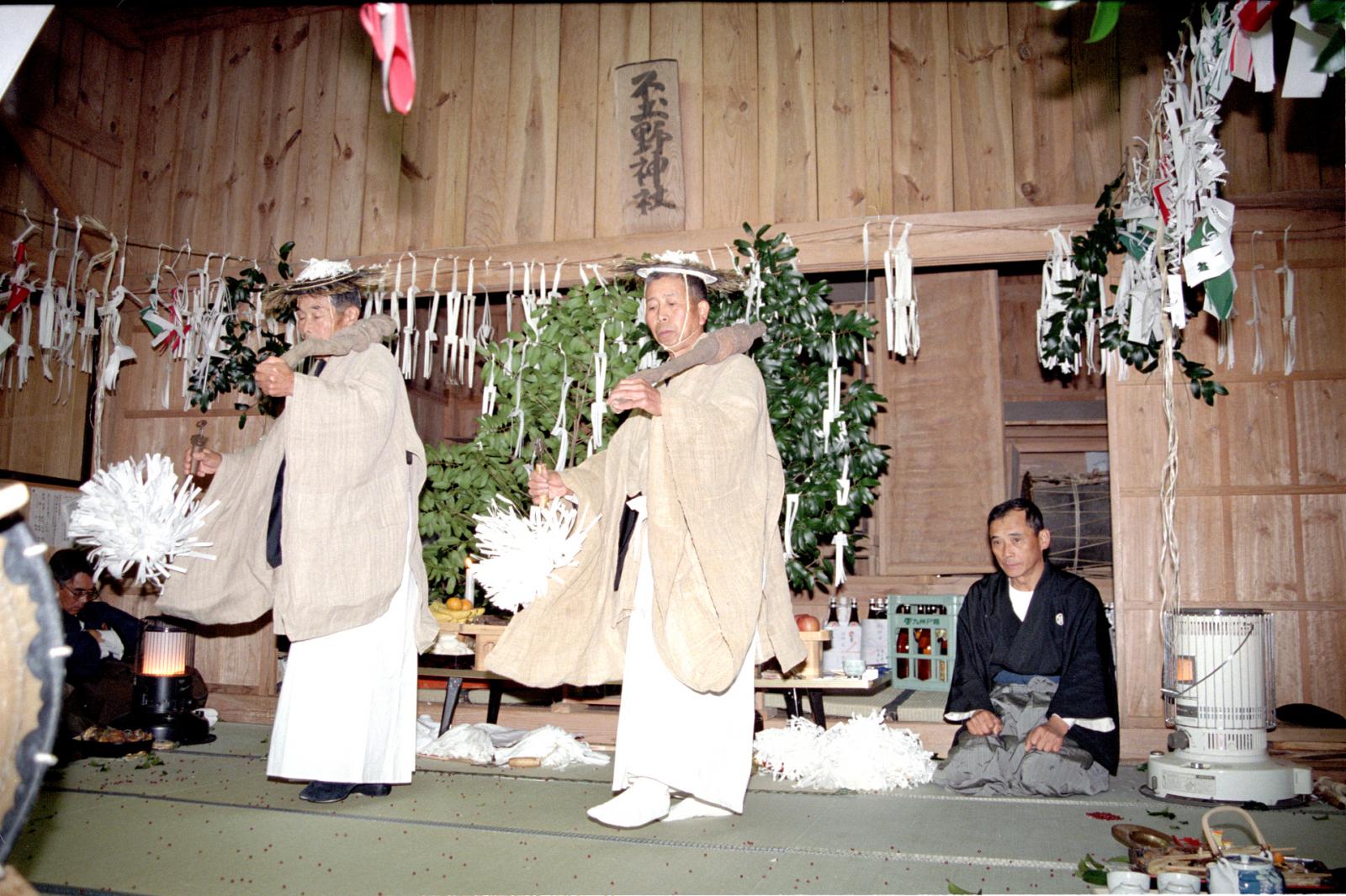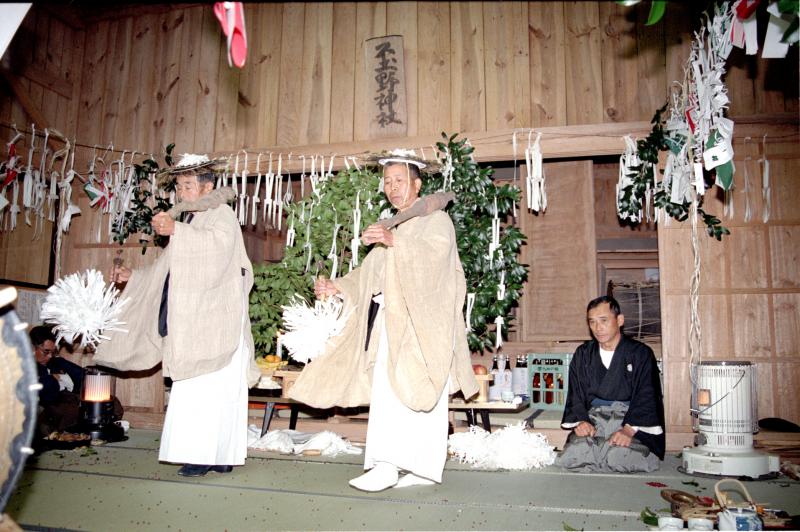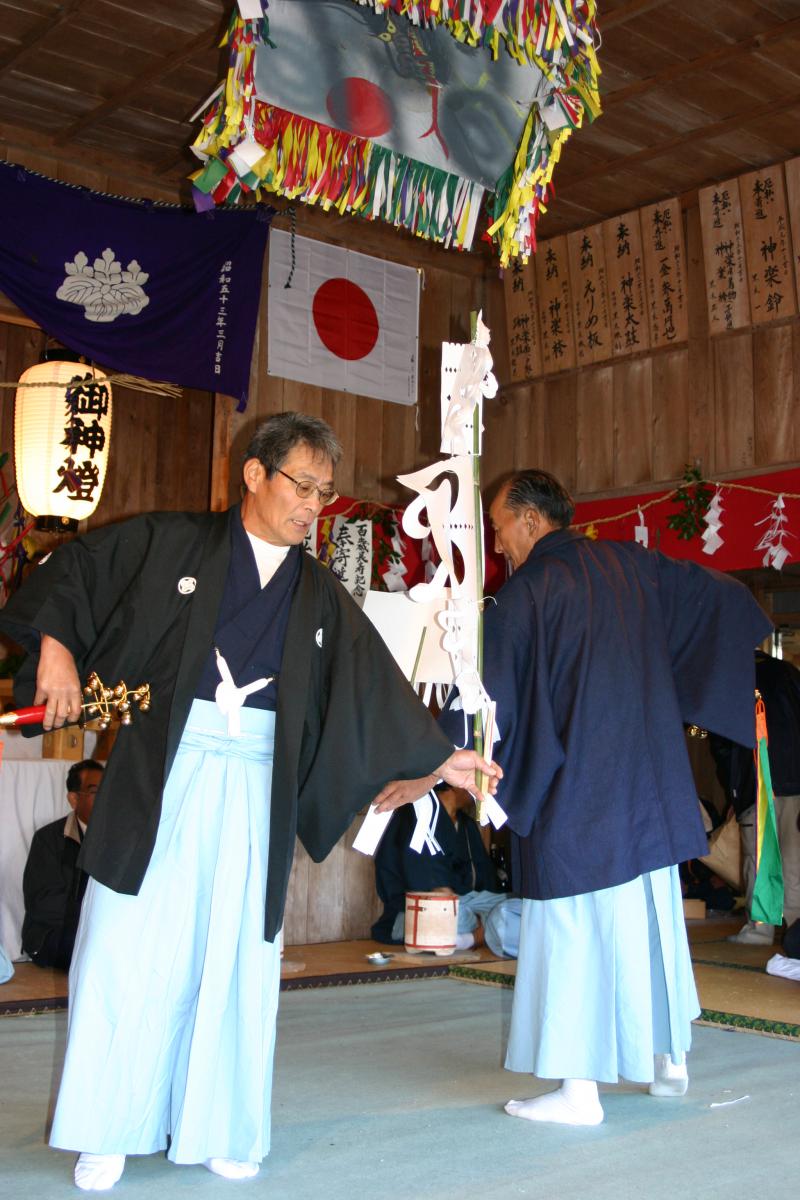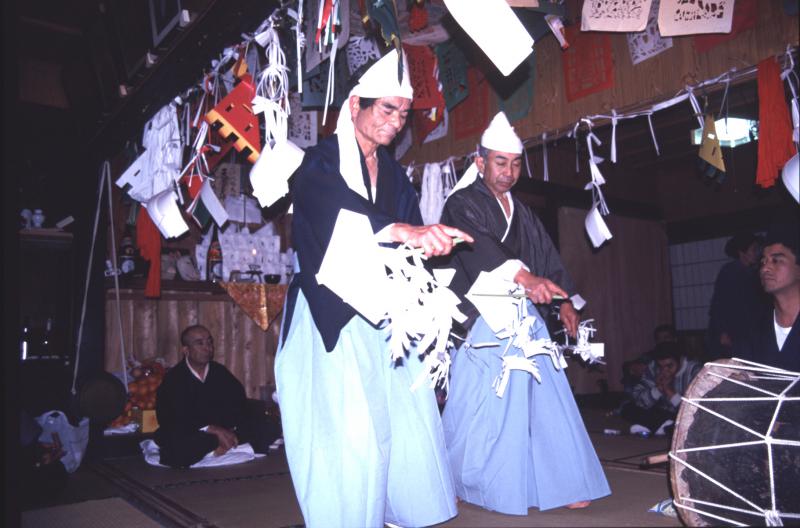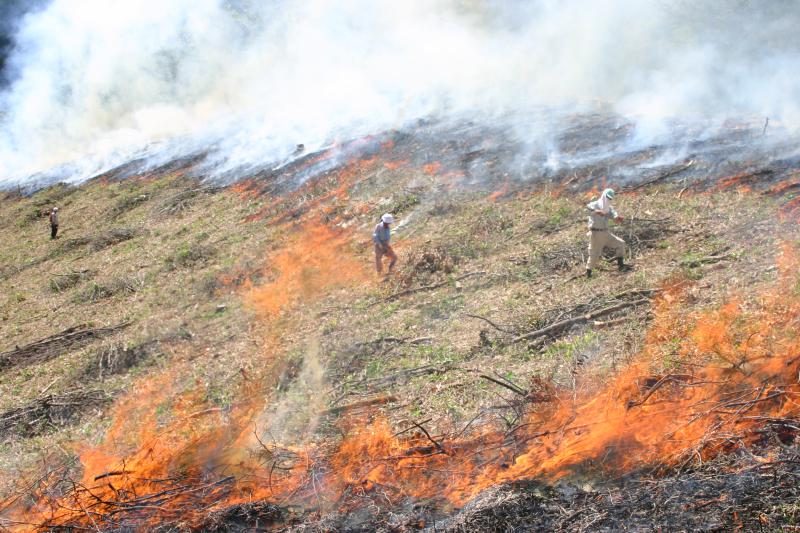焼畑農耕と神楽 について
Many Shiiba Kagura dances use crops grown on burnt fields, such as minor grains, potatoes and turnips. Kagura in which rice is placed on a tray and scattered is often seen as a form of exorcism, but here millet, millet, soybeans and azuki beans are sometimes used instead of rice. In the 'sowing of blessed seeds' in Fudono, azuki beans are scattered from the tray and villagers can be seen competing to collect them. These are used as seeds to sow in the fields the following year. In Mukoyama Hizoe, soy beans are sown in the final 'Asa Kagura', which was originally sown with millet. In Tsugao, soybeans are sometimes placed in morobuta and offered to the god of fire in the 'fire kagura'. In Mt Guma and Okumura, in the 'Nen no Kami' dance, they dance with sugarcane (corn) in their hands and then offer it to the fire deity. In Nakata, Okumamura and Mount Huma, taro is always served after the 'Inari' dance. The taro is eaten with honey. In Fudono, during the 'Inari' dance, there is a performance called 'shochubokai', in which skewers of tofu and slices of turnip are served. Overnight, the crops from the burnt fields are used in various ways in the Kagura.



